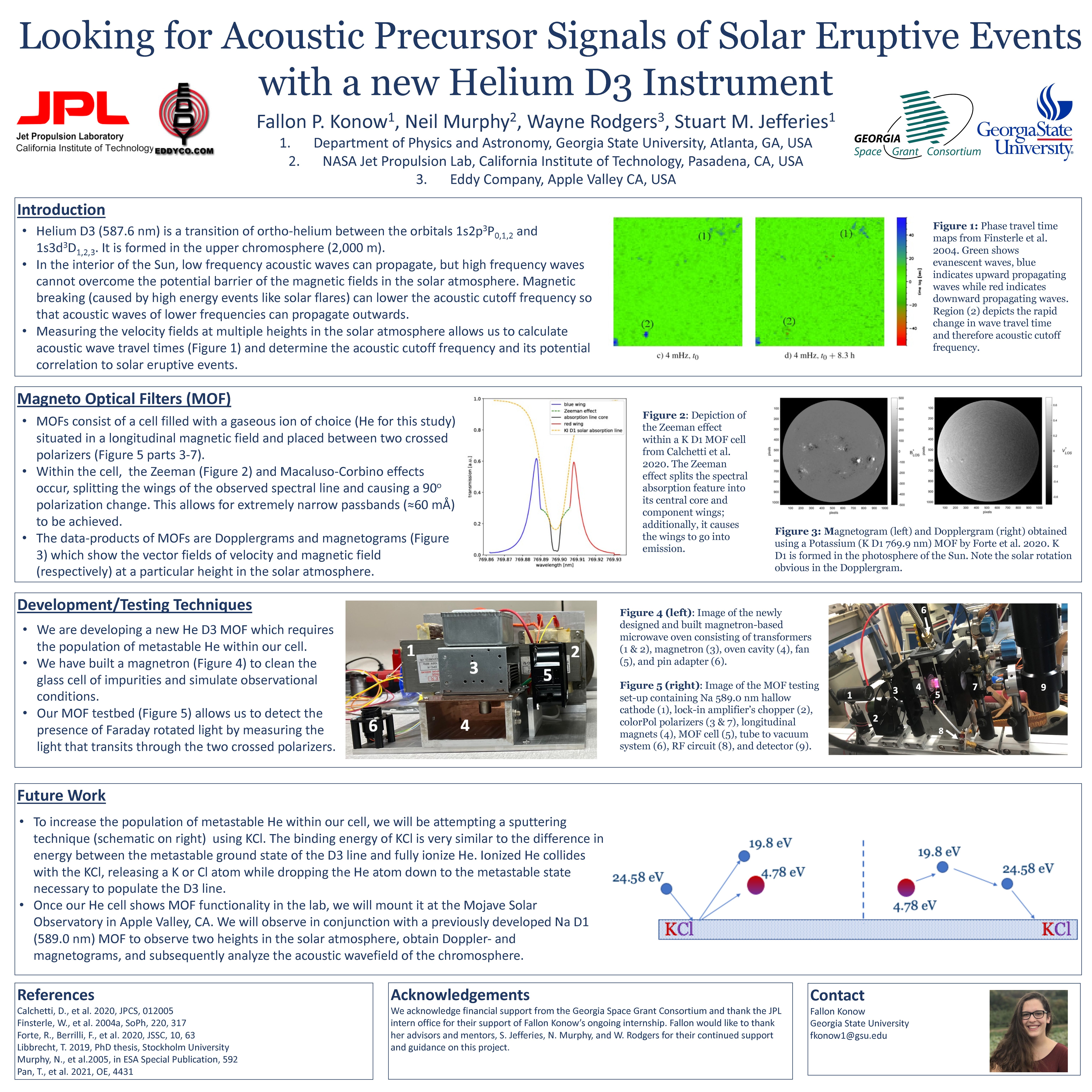Authors: Fallon Konow (Georgia State University), Neil Murphy (NASA Jet Propulsion Lab), Wayne Rodgers (Eddy Company), Stuart M. Jefferies (Georgia State University)
In the interior of the Sun, low frequency acoustic waves can propagate, but high frequency waves cannot overcome the potential barrier of the magnetic fields in the solar atmosphere. Results from previous studies indicate a possible correlation between the lowering of the observable acoustic cutoff frequency and the presence of solar eruptive events, such as solar flares. We propose to build a new Helium D3 Magneto Optical Filter (MOF) to broaden the study of the acoustic wavefield of the solar atmosphere to investigate this correlation. Our new instrument will have the capabilities to analyze the magnetic and velocity vector fields at a height of 2000 m in the solar atmosphere (upper chromosphere). When combined with previously developed MOFs (Na D1, height 700 km: lower chromosphere), we will be able to measure acoustic wave travel times through the chromosphere. This analysis will hopefully provide an additional diagnostic tool for solar flare prediction, but regardless of the correlation between acoustic cutoff frequency and solar flare production, the observations acquired by this new instrument will contribute to the datasets used for machine learning-based solar flare prediction. The usefulness of MOFs extends beyond solar atmospheric observations and solar flare prediction. As an extremely narrow passband (≈60 mÅ), MOFs can be implemented in the study of specific spectral lines of any astronomical target. The successful development of the He D3 MOF will vastly increase the possible ions for which MOFs can be developed. We present the usefulness of analyzing acoustic cutoff frequency for solar flare prediction, the benefits of using MOFs for solar atmospheric observations, and the current/future development of the new He D3 MOF.


